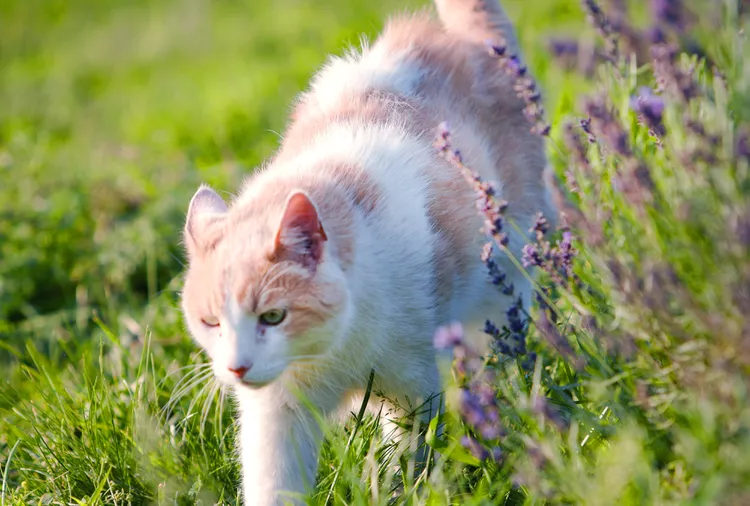Lavender is a popular perennial plant that can add fragrance and beauty to your yard or container gardens. However, before you add this herb to your yard or keep a potted lavender in your home, it’s important to know whether lavender plants are toxic to cats and dogs so you can keep your pets protected. This guide will help answer that question, while providing tips on keeping lavender away from animals to avoid harm.
Are Lavender Plants Toxic to Animals?
Lavender plants are toxic to dogs, cats, and horses. For this reason, it's best to keep these herbs far away from your companion animals. Lavender is unsafe for these animals to consume because it contains linalool, a compound that is toxic to many animals. Unlike humans, who are able to eat lavender safely, cats are unable to digest this compound, or linalyl acetate, which are both present in lavender plants. Dogs and horses also have adverse reactions.
Because lavender has such a tiny concentration of linalool, it may not cause much of a problem if an animal ingests a small amount of it. Most problems occur when a large amount is consumed all at one time. However, if they ingest any lavender, whether it is in the form of the flower buds or essential oils, then you should contact your vet or an emergency clinic. If your pet has thrown up, you might want to bring a sample for testing and analysis.
How to Keep Lavender Away from Pets
If you’re going to grow lavender, make sure that you keep it somewhere your pets are unable to access. If you’re growing lavender indoors in a pot, place the container somewhere pets can't reach. For example, this could be on a high shelf by a window (lavenders need lots of light) or in a hanging basket.
When growing lavender outdoors, fence off the area to block access. And always monitor your pets' time outdoors so they don’t end up getting into a spot that they do not belong. Of course, the best form of prevention is to avoid planting anything toxic to cats and dogs if you have these companion animals around.
Alternatives to Lavender Plants
Lavender plants bloom in June through July, creating gorgeous spikes of small blue and purple flowers. They prefer sunny, dry areas similar to their native Mediterranean climates, and are quite drought-tolerant. There are several alternatives to lavender plants that have a similar appearance and will grow in similar conditions, but are safer for cats and dogs. Two great options are:
- Catmints (Nepeta spp.) are low-maintenance, bee-friendly, and deer-resistant perennials. The purplish blue flowers appear in late spring to early summer and the leaves are aromatic.
- Russian sage (Perovskia atriplicifolia) is easy to grow and drought-tolerant. Its purplish wands of flowers appear in summer, attracting pollinators.




















